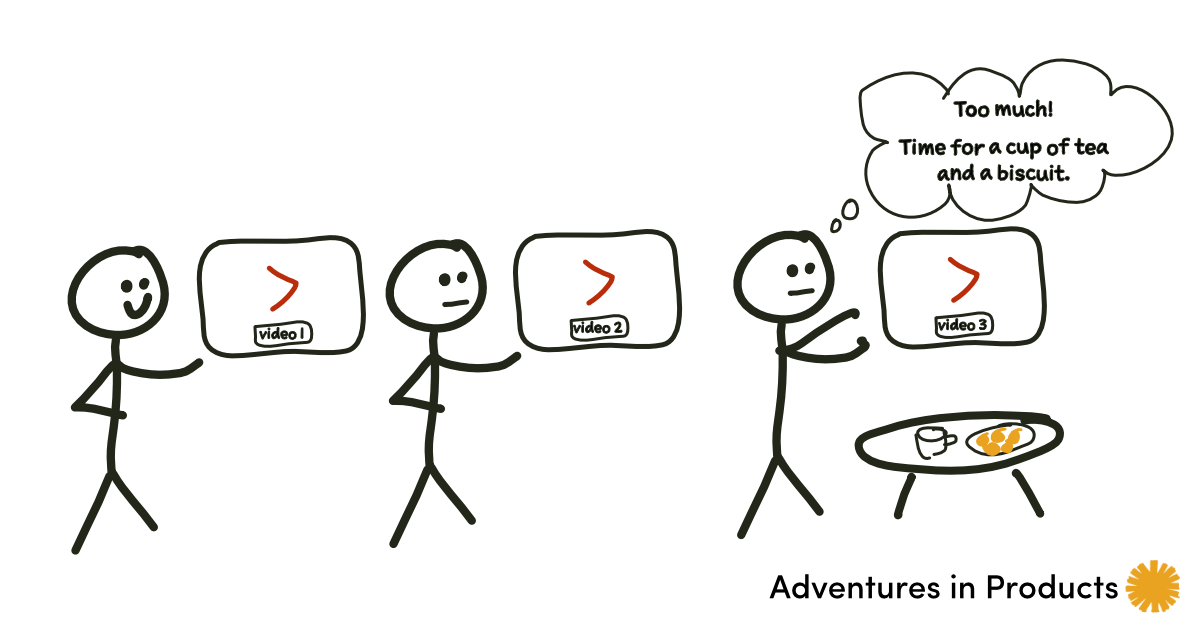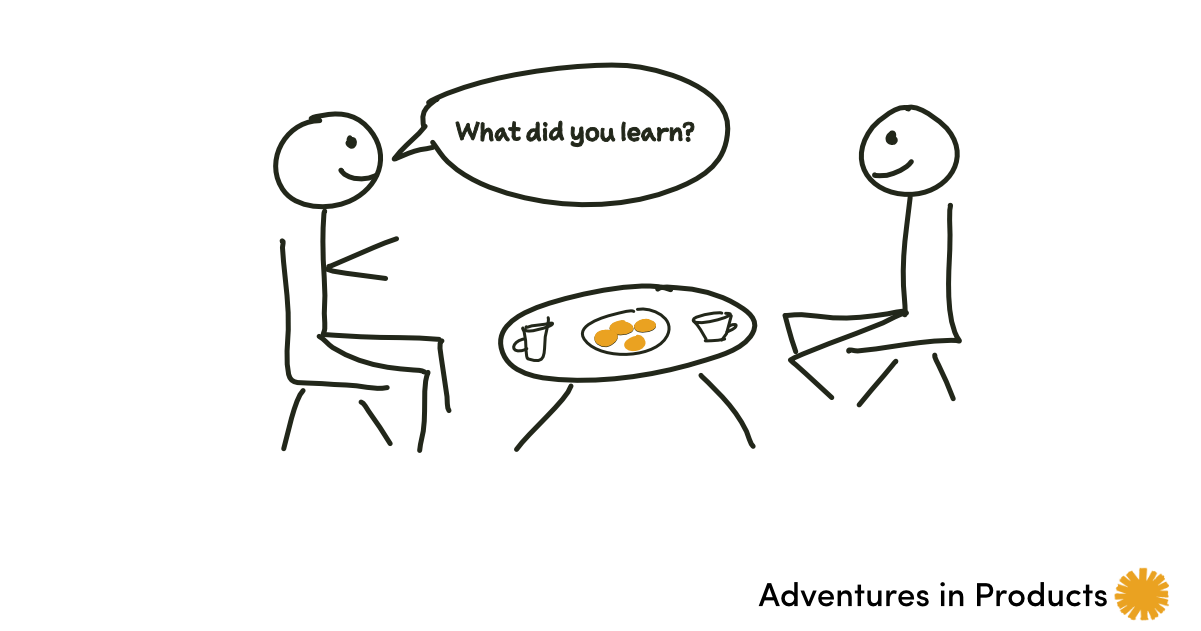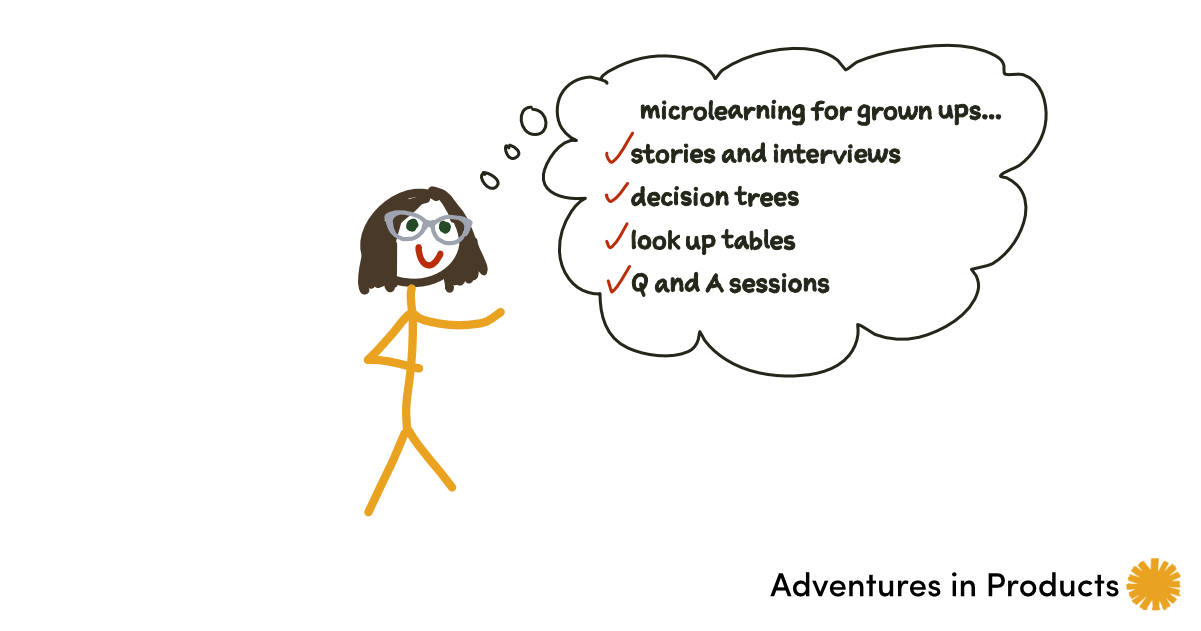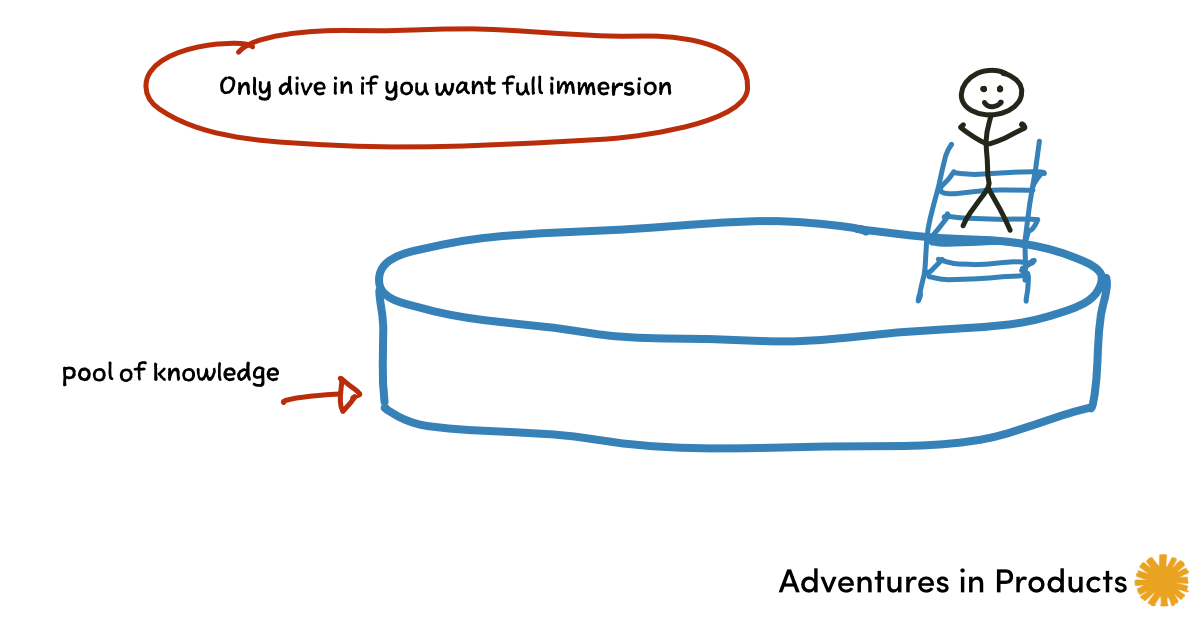Have fun creating the best formats for online courses to make them stand out

What I learnt about the best formats for online courses
Most of us have a fairly set idea of what an online course looks like. Probably 90% of all the online courses in the world follow the same linear format of video after video. But you want your online course to stand out – not be the same as all the rest.
I did a deep dive into some brand-new approaches to share with you. These include potential new formats for online courses and using microlearning and adaptive learning techniques.
Let’s start at the beginning. If you’re thinking about making an online course, you want this to be a productive asset, one which will be a money-maker for ten years. If you go the old “video-heavy” way, there’s a real danger that these new trends will overtake your online course. You need different formats to make your course stand out, especially as the market gets bigger and more competitive at the same time.
Strikingly, I learned that only a small proportion of learners – sometimes as low as 0.7% – actually finish an online course. It certainly fits with my experience. Some people have bought courses from me and then never logged back in.
You might think to yourself (maybe with an evil supervillain laugh), “Who cares if people finish the course? I’ve got their money”. But I’d argue that this is short-sighted. What does someone do when they finish a course they’ve got a load of value from? They buy something else, another course or a different product from your product ecosystem.
Making your online courses stand out for your learners means that we increase overall customer lifetime value. And I love high LTV for my clients. Plus, we help more people to use the knowledge in your course, which (unless you are an evil supervillain) is at least part of the reason you made the course in the first place.
My big learning – it’s easier to make online courses using some of these new formats
Let’s take a closer look at these diverse and unusual formats, which (bonus!) will make creating online courses a more creative experience for you. And, in all honesty, some of these new formats are much easier to create content for, meaning you are much more likely to finish your course and get it on sale. Plus, your subscribers will learn more from your course and that learning will stay with them for longer.
If you ticked the box for wanting to make online courses which have a big impact on your clients, you can do so much more. And you don’t even need to record a single video if you don’t want to.
Microlearning formats in online courses
The most challenging area I learnt about is the importance of microlearning.
Microlearning means putting your learning materials into bitesize chunks, making them easier and more accessible for people. Those old-fashioned 10-15 minute videos put too much cognitive load onto your learners. Even if they are super motivated, they can’t take it all in, and a course which is just video after video can be off-putting. I love taking courses and learning new stuff, but I know that after a while, my attention will wander, my hand will creep to the mouse, and I’ll be checking my email.

Adding microlearning formats will make your online courses much more engaging, and highlighting these new ways of learning will help your products stand out.
Mix it up: tips for making an online course
One simple way to decrease the cognitive load on our learners is to chop and change the learning style. For example, you could include super-short videos with just one learning point, quizzes, and calculator widgets to show how an idea works in practice.
What about interviewing someone who has successfully done what you’re teaching? You can also add written material, worksheets and polls into the mix.
Try changing the length of your video. Or film yourself standing up – this automatically pumps up the energy and pace of your delivery. Filming in a different location is also good to try; it’s especially effective if you have no slides to include for that part of the course.
One great example I saw recently was an online course where the teacher brought in a student who had completed it. They chatted about what the student had learnt. A simple approach, but one that very much added to how I was learning the material. Their discussions brought it to life and helped to knit it together in my brain.

Hybrid courses stand out post-pandemic
With “hybrid” courses, most of the learning happens online, but then learners meet up in real life to work together and consolidate their learning. This definitely works for more complex subjects because the subtle nuances are brought out. This is how I did my MBA nearly 30 years ago. I worked solo through all the course material, developed my understanding through essay-based assignments, and deepened my knowledge during a residential school at the end of each module.
Aren’t some of these course formats just gimmicks?
I admit that I find some of these elements a bit cringey. I work with a lot of super-clever people, and the thought of putting an online game or even a quick quiz into my courses makes me feel like I’m using juvenile techniques for sophisticated grown-ups. I need to give more thought to this area and work out more microlearning formats. Watch this space as I try things out.

Microlearning and repeats to make the learning stand out
In learning terms, we humans need to repeat information, try it out in different ways and fit it into “schema” – the patterns of knowledge in our heads. This is what leads to the “Aha!” moments we want our learners to have and increases motivation.
We’re so focused on passing on our knowledge (and finishing the course as our self-imposed deadline approaches) that we forget to circle around and repeat what we’re passing on. But microlearning allows us to create those learning circles. We can give people exercises, invite them to live events, develop examples and tell stories. Allowing ourselves short episodes of meandering can mean that our courses are better, and people are more likely to complete them.
Adding in the following means you can try out new forms of expressing yourself –
Different forms
Shorter videos
Interviews
Q & A sessions
Animations
Demonstrations
Written materials
Ignore the little devil on your shoulder whispering it’s self-indulgent. Trying out new things and creating new formats is fun. So what if they don’t work? You’ve only wasted a couple of hours at worst.
One of the people in my original workshop about online course trends shared that she was thinking of including audio or podcast elements in her courses. It’s a great microlearning idea – people could listen to the podcast version, maybe with interviews of people who have already done what you’re teaching, or just you exploring one particular aspect of the learning while they’re cooking dinner or driving. Remember that repeating and summarising your main learning points in the content is okay.
Microlearning elements for more complex courses
People seem to mostly use microlearning to encourage retention or to fit new information into learners’ heads in a fun and light way. This is very helpful if that is the aim of your online course.
I met with an ex-client who is building courses for gas boiler engineers to learn how to install heat pumps instead. It’s a fantastic opportunity, as the UK needs another 24k heat pump engineers.
He’s using microlearning to help his engineers learn and remember the different steps of the process. Each learner gets a prompt to go over a short video per day. See SkillSmart for the full product ecosystem; it’s pretty clever.
But what if we want to teach something more conceptual or take someone on a transformational journey? That’s what I need to do with Pivot to Products, where I want to give people all the know-how to develop a successful product business and in Productise Your Expertise, where I take a group of people on a six-month journey to get their first products out to the world. These more substantial courses are not just about passing on facts and knowledge; they’re taking people on a journey.
This is where we get to play with lots of different formats for your online courses to keep people engaged.
Live meetups to make your online course more interesting
Many course developers include an online live element to the learning to change the pace, help people go deeper with their learning, and make the course more interesting.
This is what I do with the Productise Your Expertise programme. Each cohort has access to a set of modules which take them through what they need to learn, but we also have live sessions to discuss progress, support one another and ask questions. The live elements add substantial value to the programme, and I love doing them. They also give me valuable information about where people get stuck, anything I haven’t explained clearly enough or where I need to develop further learning materials for people to go deep when they want to.
You can add in all kinds of different formats for the live elements within your own online course. Examples include:
- Workshops where you teach more on a certain point
- Work-along sessions where people show up to report their progress
- Ask Me Anything sessions
- Zoom meetings (which can run all day) where learners pop by with their questions
- Splitting the cohort into groups of two or three people and getting them to do an exercise together. You don’t even need to be present for this one.
Cohort-based courses – my top tip for making an online course
Definition – A cohort-based online course is where you set a start date for a group of people who all begin at the same time and work together, progressing through at a similar rate.
One of my first-ever products was a cohort-based course with fortnightly live online workshops. This was a good decision for me back then because I could launch the product very quickly. I made a course outline, wrote a sales page, set a start date and then told everyone I could about it. Over four years, I made 75k from the Remarkable Business programme.
I highly recommend cohort-based courses. Yes, you have to be more present, especially if you’re building the course around live sessions. And if you’re looking for the holy grail of passive income standalone products, they don’t fit for you.
Reasons to love cohort-based online courses:
How to future-proof your online course with microlearning: get creative
In Productise Your Expertise, I’ve done this to an extent by adding inspiring success stories of people who have built different kinds of products. But after this research, I’m excited to add in more.
Adaptive learning – a flexible format
Adaptive learning is the other big trend in online courses I found in my research. Again, I’m already doing some of this, but there is much more scope to improve my courses and programmes via some tweaking to bring in adaptive learning.
Definition – Adaptive learning is where you work out different learning paths for various groups who might be taking your online course and signpost different routes for those groups.
This could be beginners, intermediate or advanced. The beginners need to start with the basic level materials, while the others could be encouraged to start further in or just go into a quick recap first. You could even get people to identify their correct group through a quiz.
Or you could suggest that people with a depth of knowledge in one area skip a particular module and fast-track to the next. Conversely, a group of learners might want to do a deep dive into one area, and you can make this optional within the course.

The tech library within my Productise Your Expertise course has three different signposted scenarios to suit different websites. For example, you will make different choices for your tech stack if you have a one-page Wix site than if you have a well-made WordPress site that needs an extra e-commerce facility setting up.
Adaptive learning as an upsell from your online course
As you start thinking about signposting your different groups, you can also think of signposting to other products in your ecosystem. Maybe one of the groups would benefit from going through your foundation-level course quite quickly and then moving on to buying a different product. This might be another course, a tool or template you sell, or a membership programme for ongoing support and learning.
Too many ideas? Overwhelmed by choices? Me too
At the end of my research, I felt overwhelmed by the choices I now had for my courses and a huge list of things I “should” do. I had to have a good talk with myself and reframe “should” into “could” to feel enthusiastic about my opportunities rather than despondent about a growing mountain of tasks.
I don’t want to give you the same feeling, so here are three options for moving forward.
Option one – grab these format ideas for your online course
If you are thinking about making an online course, you can enthusiastically grab some of these new ideas and build them into your course design. There are some fantastic opportunities for creatively expressing yourself and saving tons of time by making your content in different ways rather than dozens of videos. To support you, I’ve made a downloadable Mission Guide to Online Course Format Ideas, which you can use while creating your course.
Option two – make a different, easier product instead of an online course
There’s also the freedom to choose a different format altogether – you don’t have to make an online course at all. If this is your first digital product, I usually don’t recommend making an online course. There are lots of other formats you can use to productise your expertise and there are alternative product formats altogether.
The most profitable different types of digital products you can sell
Option three – you already have courses on sale
If this is you, think about how you can add in some different format content, micro-learning, recaps and iterations. Ask yourself how you can signpost learners to different routes using adaptive learning ideas. Above all, how can you make your online courses stand out from a sea of courses with just video after video?
Power tip – You can add in some of these new formats with additional content – et voilà! – you have version two of your course, new-launch ready. You’ll always sell more course places during a launch, so this is a fantastic opportunity to do a short sprint with these ideas and then go all out on a launch of version two.
And, of course, this is exactly what I’m going to do. Make sure you’re getting my regular emails full of tips, ideas and stories of people’s adventures in products to see when I launch Pivot to Products version 2.
